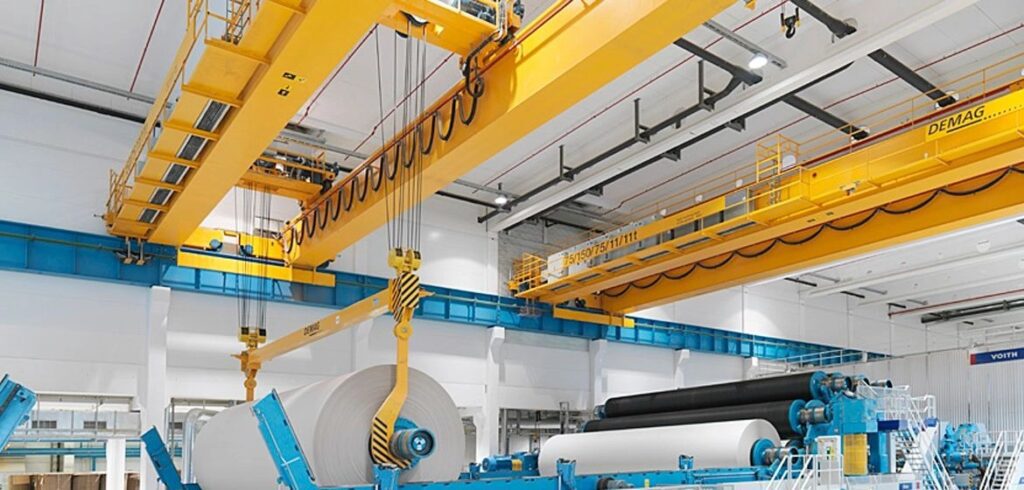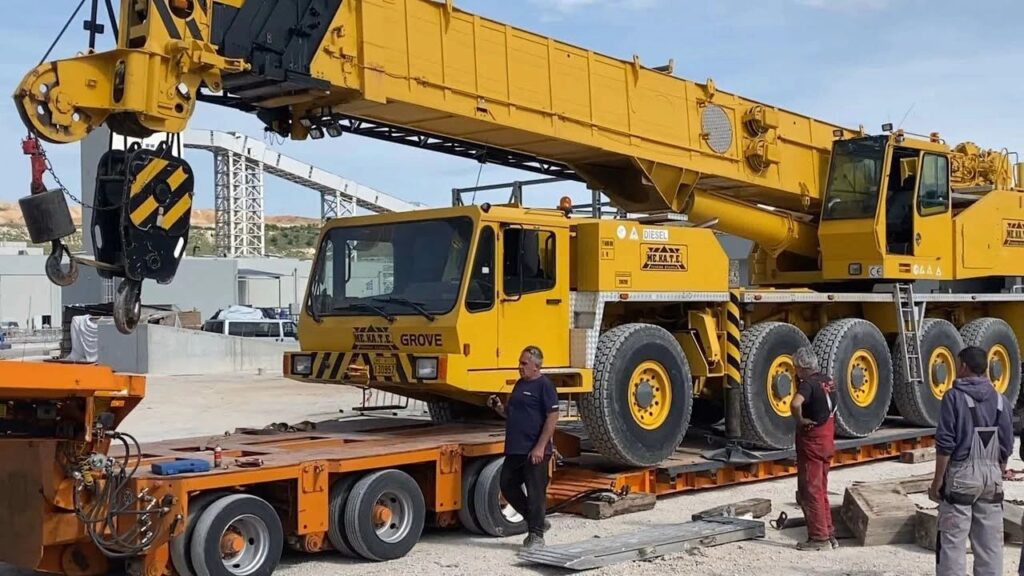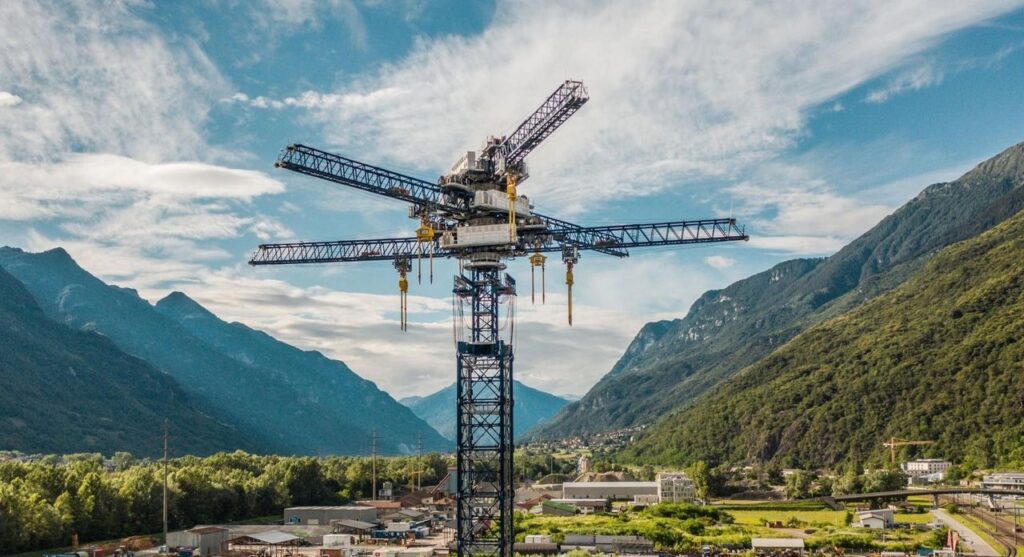Why It’s Important to Understand the Lifting Operations of Cranes
Cranes are essential pieces of equipment in the construction, manufacturing, and transportation industries. They are used to lift and move heavy objects, making them a crucial tool for completing tasks efficiently and safely. However, operating a crane requires specialized knowledge and skills to ensure their proper function and prevent crane accidents.
It is crucial for workers to have a thorough understanding of the working principle of cranes to operate them effectively and safely on a job site.
Utilization of Cranes in the Construction Industry
In construction industries, cranes are utilized to lift, move, and lower heavy materials such as steel, concrete, and large tools. This plays a pivotal role in the creation of structures. The operation of cranes in this sector requires certified operators who are familiar with the machine’s control systems and safety procedures.
- Tower cranes dominate the skyline on construction sites. This is due to their ability to reach great heights. They are typically utilized in the construction of tall buildings. Their striking vertical reach allows for the lifting of materials to significant elevations.
- Mobile cranes are known for their versatility and mobility around the job site. They are equipped with a telescopic boom that can be adjusted to various lengths. This enables the lifting and moving of materials over obstacles and onto higher levels of a structure.

The Role of Crane Operation in the Manufacturing Industry
In the manufacturing sector, cranes play a vital role in assembling, loading, and unloading heavy products and materials. The efficiency and safety of these operations are paramount in maintaining a smooth production flow.
- Overhead cranes are extensively used in manufacturing. Their ability to travel along a fixed path makes them ideal for repetition. This can include moving materials from one part of the assembly line to another. Equipped with a hoist that moves along one or two beams, they excel in precision and can handle substantial weights. This makes them a go-to solution for manufacturing tasks.
- Jib cranes are a common choice in manufacturing settings. Their rotating arm is excellent for tasks that require a circular motion, such as moving materials in and around workstations. With their compact footprint, they are particularly useful in areas where space is limited.
- Bridge cranes are used for heavy lifting tasks in factories. Operating on elevated tracks, these cranes can handle bulky or awkwardly shaped items. This ensures the efficient and safe transportation of goods across large manufacturing plants.

Crane Operations in the Shipping Industry
In the shipping and transportation sector, cranes are indispensable for the movement and transport of goods. With the need to handle containers and large cargo, the industry relies heavily on these machines to ensure efficient and safe operations.
- Gantry cranes are the giants of the shipping industry. They are pivotal for loading and unloading cargo containers onto ships. They stride on rails and can lift substantial loads, making them perfect for port operations.
- Mobile cranes are used for loading and unloading heavy goods onto trucks or trains. Their mobility allows for flexibility in handling cargo at different points within a logistics hub.
- Jib cranes are common at ports and are perfect for shifting loads within a circular area. Their horizontal arm can swing around, facilitating efficient movement.
- Telescopic cranes are used in the shipping industry for their adjustable arm length. This enables them to reach areas that are difficult for other crane types. They can be used for tasks like ship repair, where reach and flexibility are required.

Use of Cranes in the Energy Industry
In the energy sector, cranes have a significant role in both the assembly and maintenance of infrastructures. This can include wind turbines, offshore oil rigs, and power plants. The variety of tasks and often hostile environments in this industry call for specialized types of cranes.
- Crawler cranes have caterpillar tracks that offer excellent stability and mobility. This is crucial when operating in unstable terrains such as those found in many energy projects. They are frequently used in constructing wind turbines due to their high lifting capacity and ability to work in challenging conditions.
- All-terrain cranes are used in operations that require high mobility and versatility. They are often the go-to choice in the energy industry. With the ability to navigate both on and off-road situations, they are essential for power plant construction and maintenance.
- Floating cranes are indispensable for their ability to lift heavy loads in marine environments. They are commonly used in the construction and decommissioning of offshore oil platforms.
- Telescopic cranes are known for their versatility which makes them ideal for the energy sector. Their extendable arm is useful in wind turbine assembly, allowing for the precise placement of large turbine components.

Safety Hazards and Protocols in Crane Operations
While cranes offer numerous benefits in modern industries, it is essential to acknowledge the potential hazards associated with operating these machines. Some common crane-related accidents include:
- Contact with power lines: overhead cranes can accidentally come into contact with live power lines, resulting in electrocution or fire.
- Boom collapse: this can occur due to overloading or poor maintenance, potentially causing significant damage or injury.
- Tipping: The stability of a crane can be compromised if not set up correctly, leading to tipping and overturning accidents.
To mitigate these risks, proper training and adherence to safety protocols are crucial for anyone operating a crane. These measures include regular maintenance checks, proper load calculations, and following manufacturer guidelines. Additionally, workers must be trained to recognize potential hazards and adopt safe working practices.
Weather Challenges and Safety Measures in Crane Operations
The weather can have a significant impact on crane operations, especially in outdoor industries such as construction and energy. Weather conditions such as high winds can pose safety risks for both the crane operator and nearby workers.
To ensure safe operation, crane operators must pay attention to weather forecasts and take necessary precautions. This can include reducing the load capacity or shutting down operations if conditions become unsafe. Additionally, regular maintenance and inspections of the cranes can help identify any potential issues that could be exacerbated by weather conditions.
Role of Regulations in Crane Operations
Regulations are crucial for crane operations, ensuring safety for workers, the public, and the machinery. Organizations like OSHA in the United States establish these rules, covering various aspects of crane operations, from inspections to load limits:
- Safety regulations are a set of safety rules for crane equipment, including overhead, jib, bridge, and carry cranes. These regulations encompass inspections, maintenance, and crane operator certification.
- Inspection and maintenance regulations mandate regular checks to identify potential hazards that may cause accidents.
- Operator training and crane operator certifications are required for crane operators. This covers operating procedures and crane safety protocols.
- Load limit regulations specify maximum load limits for different crane types to prevent dangerous situations and equipment failure.
- Safe practices are a set of regulations that outline safe crane operation practices. This can include using safety gear, maintaining visibility, and staying clear of power lines.
These regulations ensure the safe and efficient operation of multiple cranes across job sites, promoting customer satisfaction and maintaining machinery quality.
The Benefits of Utilizing Cranes in Modern Industries
After exploring how cranes operate across various sectors, from skyscraper construction to cargo transport, here are the key benefits of operating a crane in these industries:
- Efficiency: cranes can handle tasks that would be time-consuming and difficult for human workers. This ability results in faster project completion times and increased productivity.
- Safety: with proper usage and maintenance, cranes contribute significantly to workplace safety by performing tasks that could otherwise pose risks to human workers.
- Versatility: the diverse range of crane types means that there is a crane to suit almost any task or environment, providing flexible solutions for a multitude of industries.
- Lifting capacity: cranes can lift and move heavy loads that would otherwise be impossible for human workers, making them indispensable in industries like construction and shipping.
- Cost-effectiveness: while the initial investment may be high, the increased efficiency and productivity that cranes offer typically result in significant cost savings over the long term.
- Sustainability: with advanced technology, cranes are becoming more energy-efficient, making them a sustainable choice for industries looking to reduce their carbon footprint.
Elevating Efficiency, Safety, and Sustainability
A crane operator plays a crucial role in various industries, from construction and manufacturing to shipping and transportation. Understanding the different types of cranes and their working principles is essential when making a choice that best fits your needs. These machines are regulated by people to ensure safety, efficiency, and sustainability on job sites. With advancements in technology, cranes continue to evolve, making them an indispensable tool for industries worldwide.
